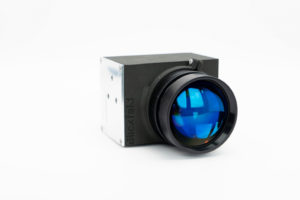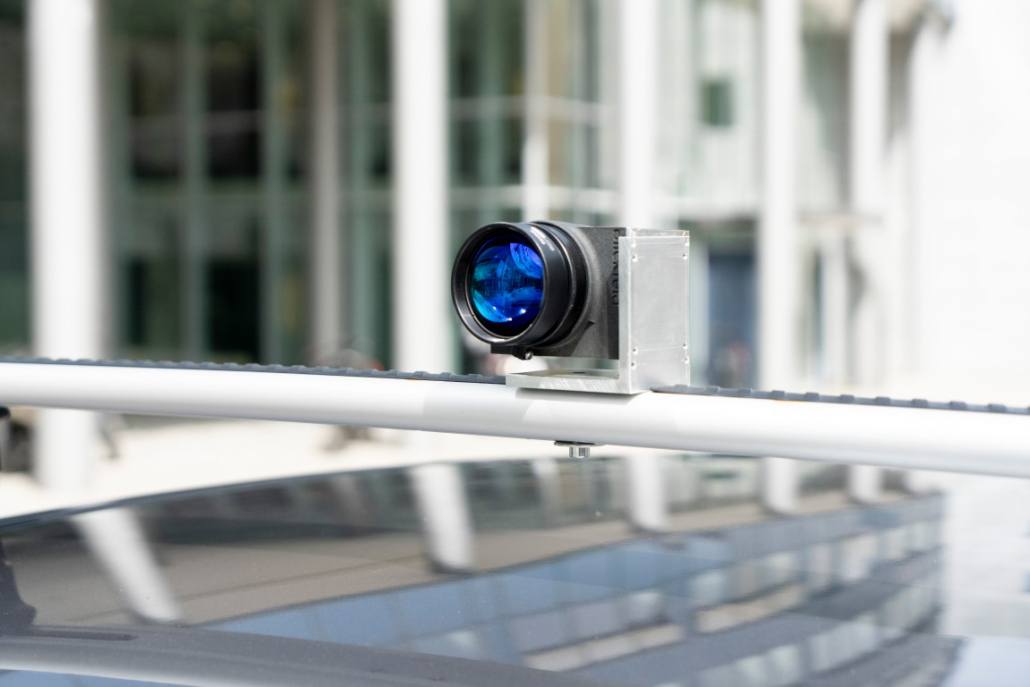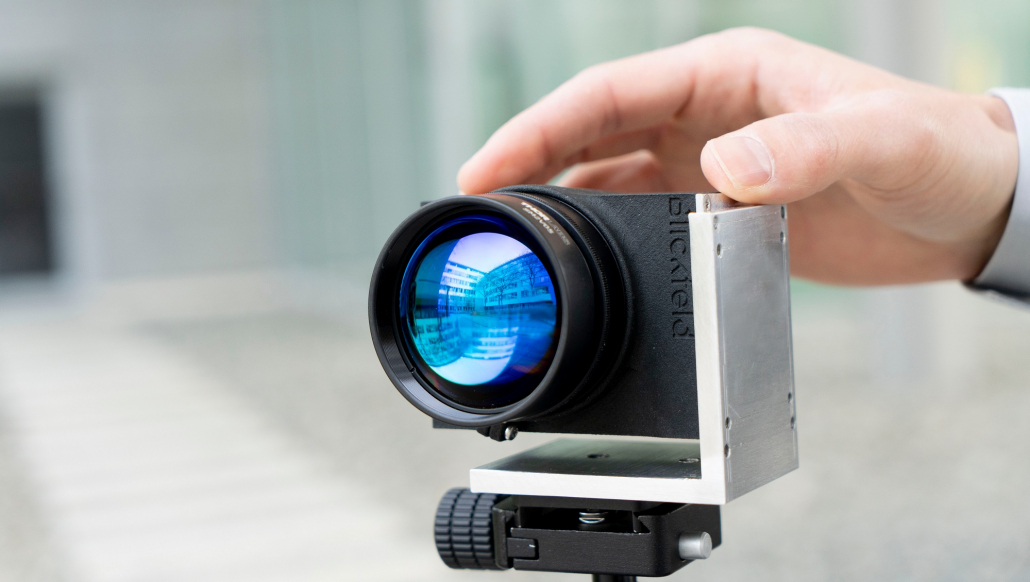Blickfeld is a German provider of solid-state lidar technology. Their latest offering is the Cube Range, a MEMS-based lidar sensor with a range of 150 meters with 10 percent reflection. A range of up to 250 meters can be achieved with higher reflection, which is especially useful for highway driving scenarios, explains Florian Petit, one of Blickfeld’s founders.
“The faster the car is driving, the earlier it has to be able to detect obstacles on the road in order to react accordingly and initiate possible driving maneuvers. The range of 250 meters can be achieved under perfect circumstances, meaning that the detected object has a high reflectivity, like a car’s brake lights. What is special about the Cube Range is, that it even detects obstacles that have a low reflectivity, like black tires in a distance of up to 150 meters. This extended detection range enables higher driving speeds.”
A full lidar suite for autonomous vehicles

The new Cube Range, a MEMS-based lidar sensor.
When the Cube Range is combined with the Blickfeld Cube, a wide field-of-view lidar sensor, a full lidar suite for autonomous vehicles is created, says Petit.
“The Blickfeld Cube offers a wide field of view and is perfect for all urban driving applications. It perceives the car’s surroundings reliably and detects cars, pedestrians and other traffic participants. The density of the 3D information enables object recognition in order to react accordingly to the traffic.”
The Cube Range, on the other hand, was developed for long distance detection. According to Petit, the sensor can detect obstacles up to 250m away in especially high resolution and is even capable of picking up low reflective targets at 150m.
“This is important for driving at highway speed, because the faster you drive, the farther you have to be able to look ahead,” says Petit. “The sensor translates the gathered data in real-time into information that can be used by the car to navigate safely.”
Full coverage can be achieved with a pair of Cube Range sensors are mounted in the front and back for highway driving, combined with cubes positioned on the corners of the car for closer-range and blind spot detection.
“Together they are able to cover 360° around the car, such that a full automotive lidar suite might be a possible scenario,” Petit says.
In addition to this hardware, Blickfeld offers an additional software stack for object detection and classification, motion detection and tracking, people counting, localization, drivable area detection, volume measurement and multi-device fusion, adds Petit.
“For automotive applications, we concentrate on building an environment perception stack which can be integrated into tier one or manufacturer navigation solutions. For non-automotive applications, such as security and smart city applications, the requirement is more towards a turn-key solution”.
Non-automotive applications of lidar
Petit also sees a great potential for lidar applications in various areas besides the automotive industry.
“For example, security applications include for example intrusion detection: if a person or an object of specified dimensions enters a pre-defined area, an alarm is issued. The precise 3D data that is generated by an installed lidar enables the reliable detection of intruders who are for example climbing over fences or on to rooftops.”
But that’s not all. Blickfeld envisions applications in other domains, such as agriculture, where the technology could be applied to autonomous tractors as well as other agricultural vehicles. Lidar sensors could also be included in drones to measure crop sizes, for example.
Smart cities offer a wide field of lidar applications including through the integration of sensors into infrastructure. There is a potential for applications that monitor and analyze traffic flows, with the data feeding into systems that can take actionable steps to resolve any jams, for example by adjusting traffic light phases or suggesting redirecting routes. The sensors can also be integrated in so-called smart poles in order to detect free parking spaces.
“Both of these measures will reduce congestions in cities through optimized traffic flows and parking guidance systems that prevent drivers from circling the block several times to find a parking space.”

Robust and powerful 3D solid-state lidar for the mass market
The Cube Range sensor was designed as a robust and powerful 3D solid-state lidar for the mass market, and Petit explains how in reality this translates to driving safety.
“Mobility is all about distance and non-colliding. Only if you can make sure that you are not colliding with any other traffic participants, you can navigate with a certain speed. Lidar technology enables speed, and thereby mobility, by reliably and directly measuring distances and producing high-definition 3D maps of the vehicle’s surrounding. This adds substantially to driving safety.”
What is special about Blickfeld’s technology is their reinvention of a core component, the so-called beam deflection unit by building a MEMS mirror that is specifically designed for LiDAR applications. This greatly simplified the overall LiDAR design, resulting in the possibility to produce in a highly automated fashion at large volumes. By building a solid-state sensor, there is no reliance on any mechanical parts that can cause abrasion and need maintenance, making the lidar more robust than other models, for example when it comes to vibrations or other environmental conditions like temperature or humidity. Petit adds that “since the sensors are integrated into the vehicle, a design object, it is important for the lidar to be small as not to interrupt the car design. The next step for us is therefore to develop even smaller sensors. Additionally, we are constantly working on achieving the highest range and best resolution possible”.






